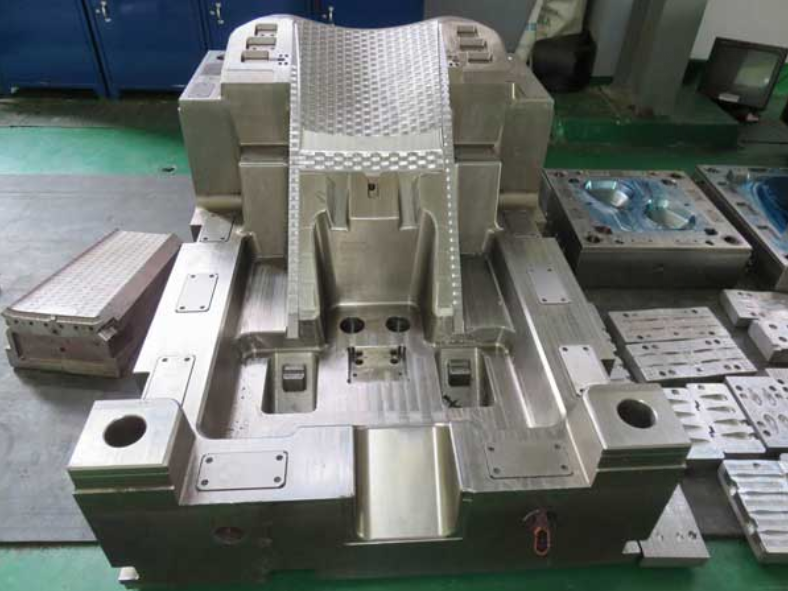Injection Molding for Automotive Parts: An Essential Manufacturing Process
Injection molding is a widely used manufacturing process for producing plastic and composite parts. It is a highly automated process that is used for mass production of components for various industries, including the automotive sector. In this article, we will focus on the importance of injection molding for automotive parts.
The automotive industry is one of the largest consumers of injection-molded parts. The parts produced through injection molding are used in various applications, from interior and exterior trims to under-the-hood components. Some of the automotive parts produced through injection molding include door panels, dashboards, bumpers, grilles, HVAC components, lighting systems, and engine covers.
Injection molding offers several benefits for the automotive industry. One of the key advantages of injection molding is its ability to produce complex geometries with high precision and accuracy. This is important for the production of automotive parts, which often require complex shapes and tight tolerances. Injection molding can produce parts with consistent dimensions and high repeatability, ensuring that the parts fit perfectly and function as intended.
Another advantage of injection molding is its high production efficiency. Injection molding machines can produce parts at a high rate, with cycle times as low as a few seconds. This makes injection molding a cost-effective solution for mass production of automotive parts. The process is also highly automated, reducing labor costs and ensuring consistent quality.
Injection molding also offers design flexibility, allowing automotive manufacturers to create parts with different colors, textures, and finishes. This is important for creating a unique look and feel for different car models and brands. Injection molding can also produce parts with various material properties, including stiffness, durability, and heat resistance. This allows automotive manufacturers to choose the most suitable materials for different applications, ensuring that the parts perform as intended.
There are several challenges associated with injection molding for automotive parts. One of the biggest challenges is the need for high-quality molds. The molds used for injection molding must be designed and machined to high tolerances, ensuring that the parts produced are accurate and free from defects. The molds must also be durable, able to withstand the high pressures and temperatures associated with injection molding.

Another challenge is the need for material selection and testing. Automotive parts must be produced using materials that meet strict performance and safety standards. The materials must be able to withstand harsh environmental conditions, including extreme temperatures, UV exposure, and chemical exposure. The materials must also be able to meet stringent fire safety regulations.
In conclusion, injection molding is an essential manufacturing process for producing automotive parts. It offers several advantages, including high precision, high efficiency, and design flexibility. However, it also presents several challenges, including the need for high-quality molds and material selection and testing. As the automotive industry continues to evolve, injection molding will play a critical role in producing high-quality, reliable, and innovative automotive parts.
முந்தைய:Automotive Parts Production with Injection Molding Technology
அடுத்தது: Exploring the Efficiency and Benefits of Plastic Injection Molding Technology
-
Aerospace Mold: Innovation and Precision in Aerospace Manufacturing
2023-6-11
The aerospace industry is one of the most demanding and sophisticated industries in the world. At the heart of this indu...
விபரங்களை பார் -
தனிப்பயன் பிளாஸ்டிக் ஊசி மோல்டிங் மூலம் துல்லியத்தை உருவாக்குதல்
2023-4-28
Creating precision with custom plastic injection molding is a process that involves the manufacturing of plastic parts t...
விபரங்களை பார் -
Industrial Plastic Molds: Precision Tools for Manufacturing
2024-5-31
In the vast world of manufacturing, industrial plastic molds have become an indispensable and important tool with their ...
விபரங்களை பார் -
ஊசி மோல்டிங் செயல்முறை உங்கள் வணிகத்திற்கு கொண்டு வரும் நன்மைகள்
2022-8-3
நமது அன்றாட வாழ்வில் விளம்பரப் பலகைகள், எலக்ட்ரானிக் பொருட்கள் உறைகள், அழகு சாதனப் பொருட்கள்... என அனைத்து வகையான பிளாஸ்டிக் பொருட்களையும் பார்க்கிறோம்.
விபரங்களை பார் -
துல்லியமான உற்பத்திக்காக உயர்தர வாகன அச்சுகளை உருவாக்குதல்
2023-4-13
வாகனத் தொழில் உலகில் மிகவும் தேவைப்படும் உற்பத்தித் துறைகளில் ஒன்றாகும்.
விபரங்களை பார் -
Precision Medical Molding Parts for Critical Applications
2023-5-6
Precision medical molding parts play a critical role in the medical industry, where quality and reliability are paramoun...
விபரங்களை பார்







